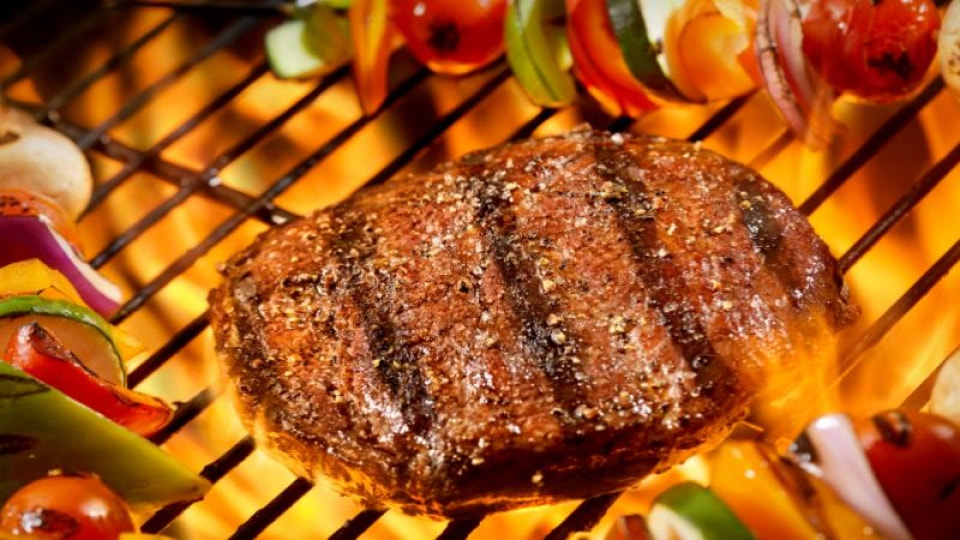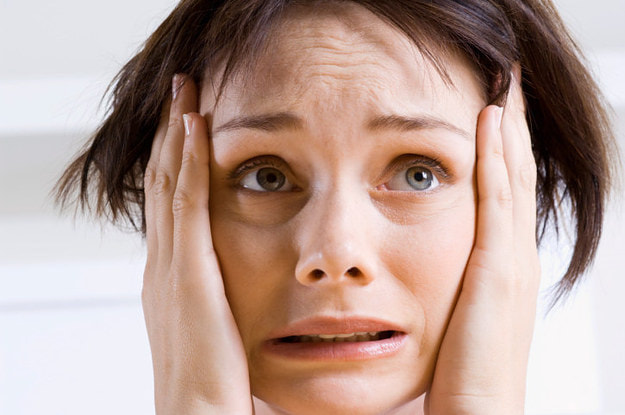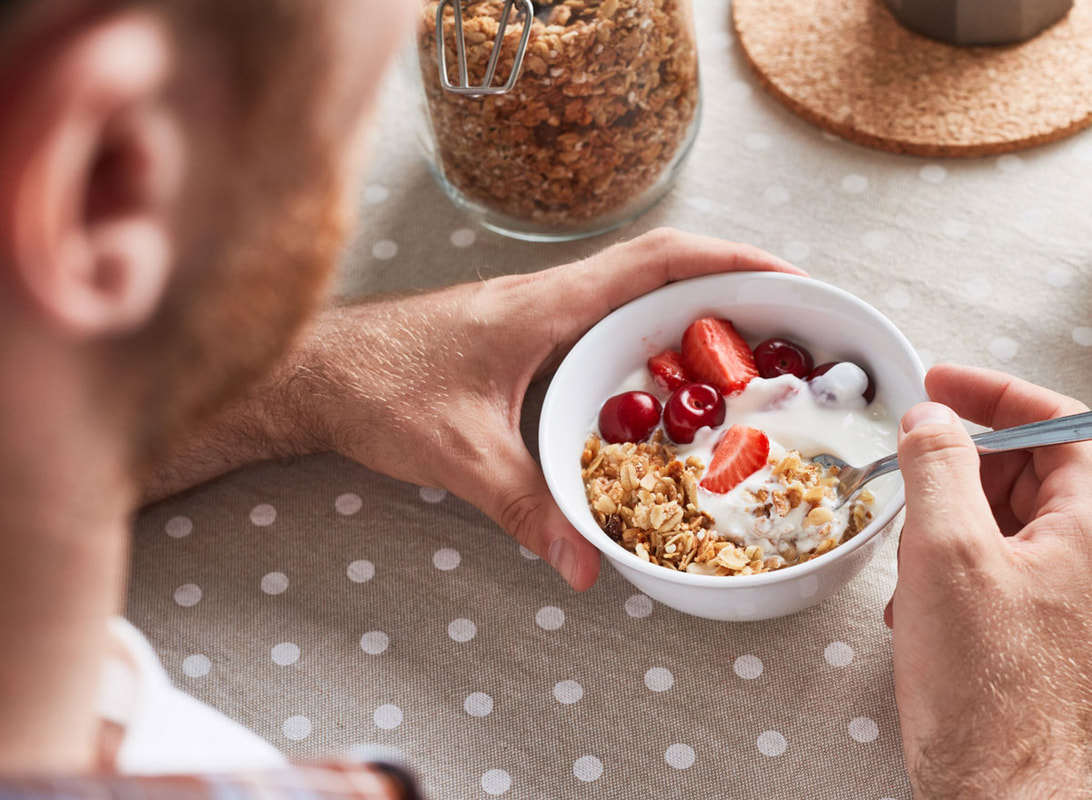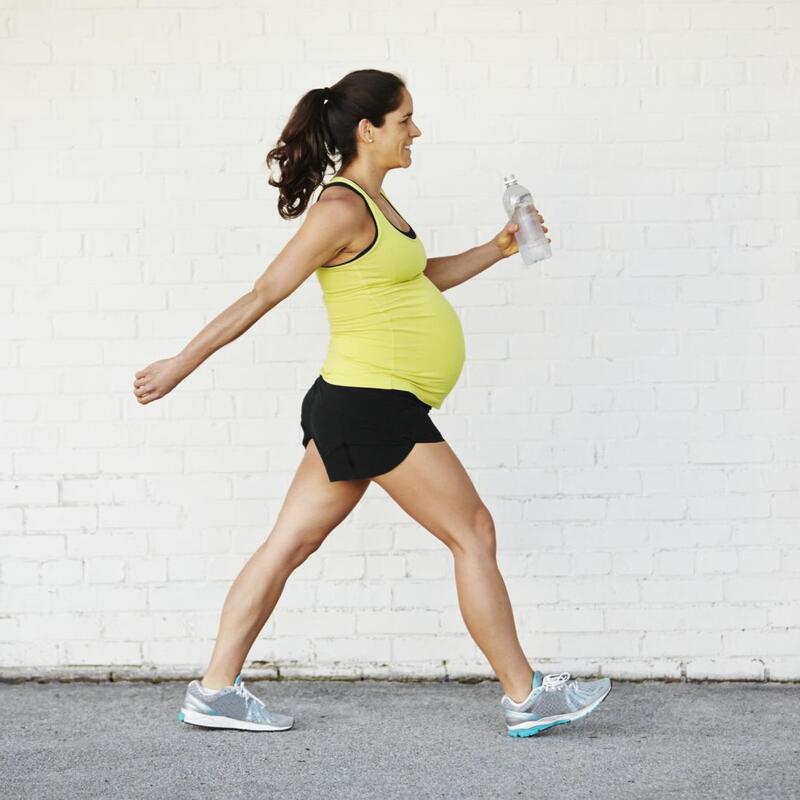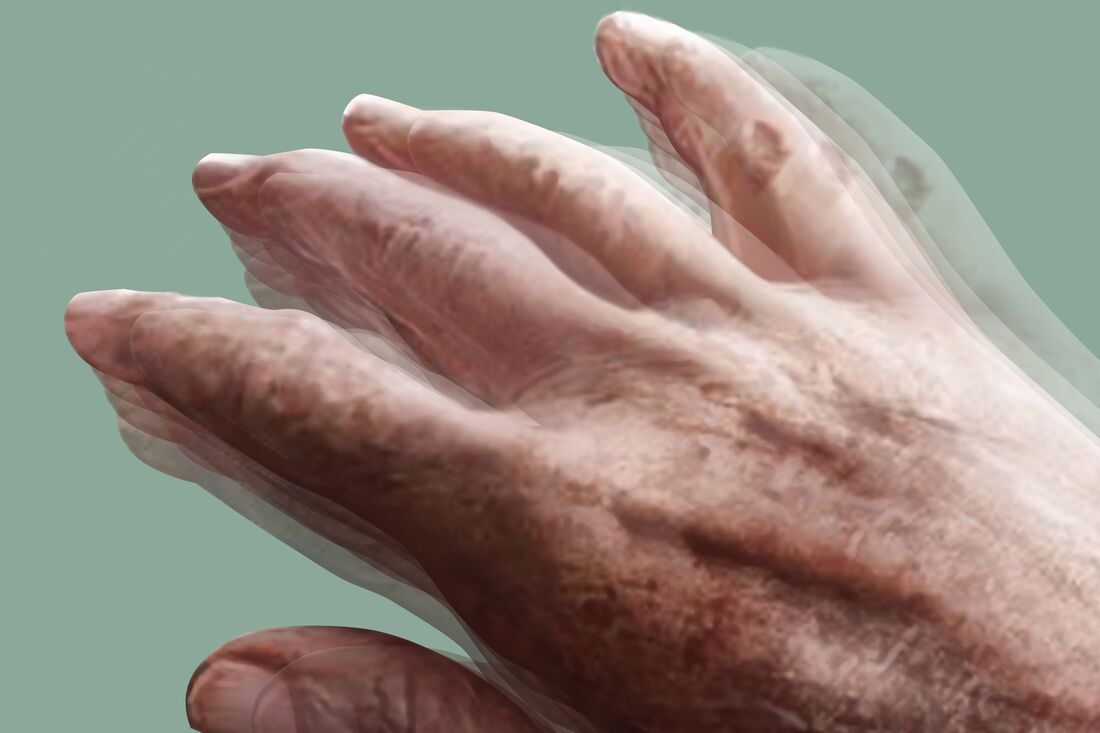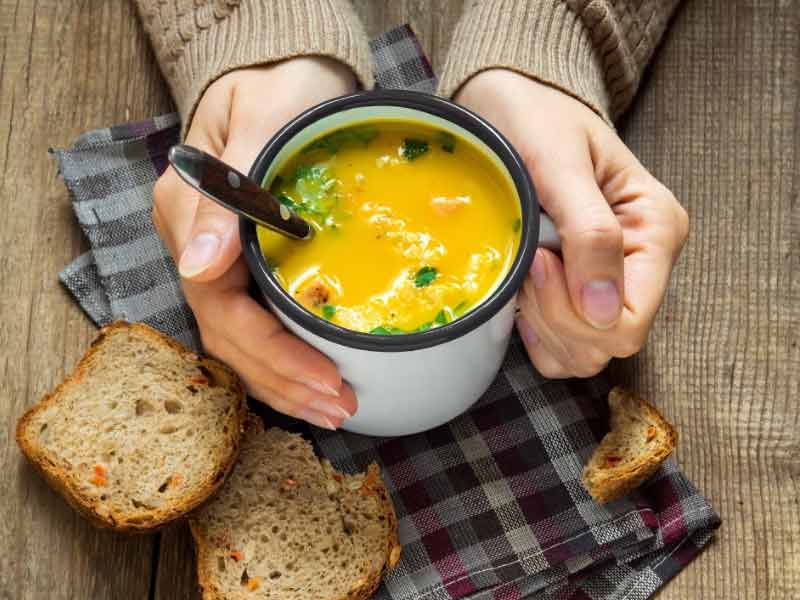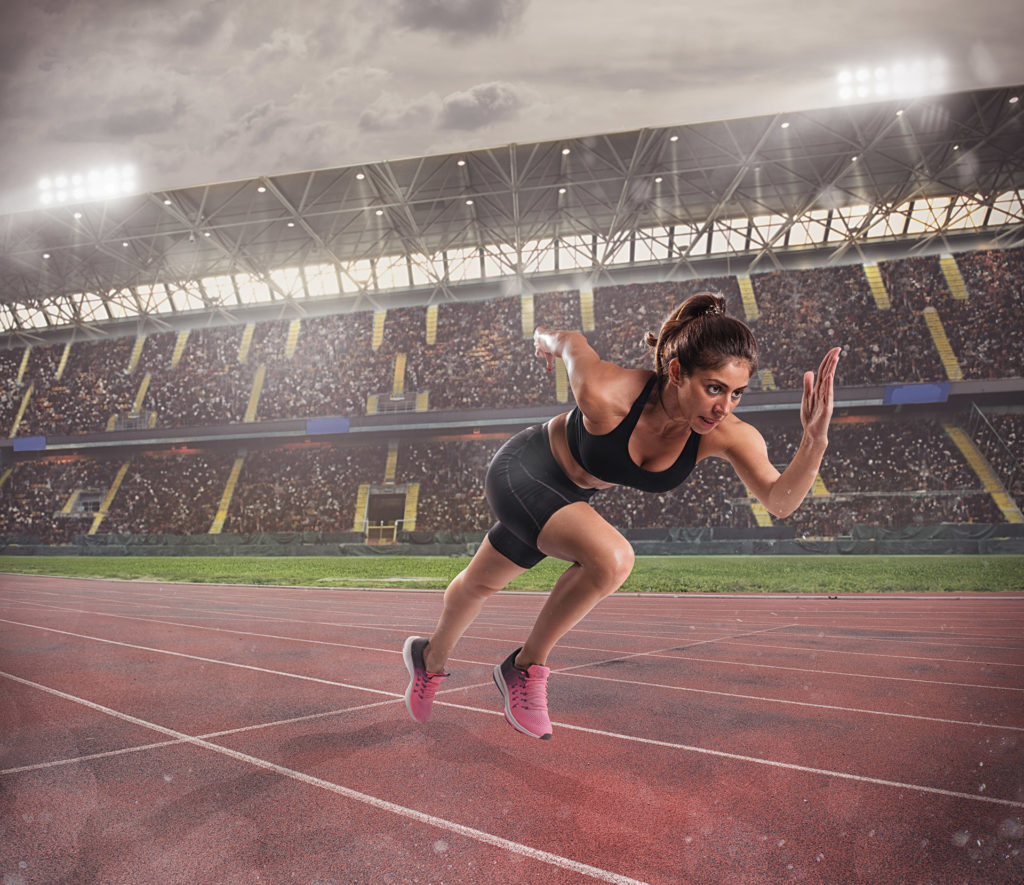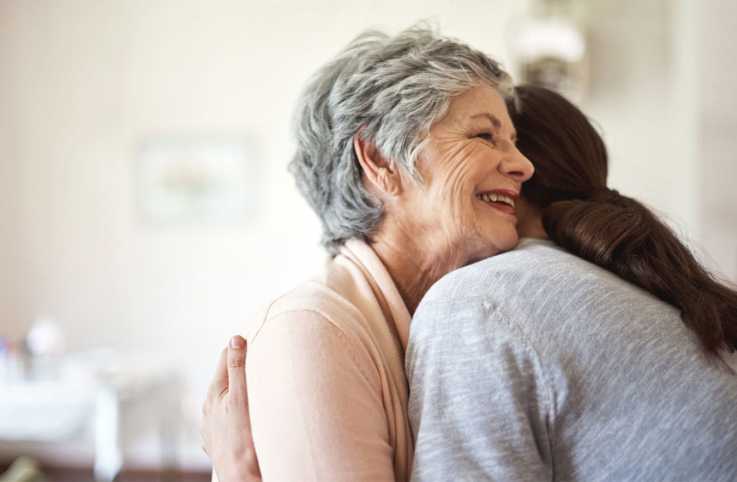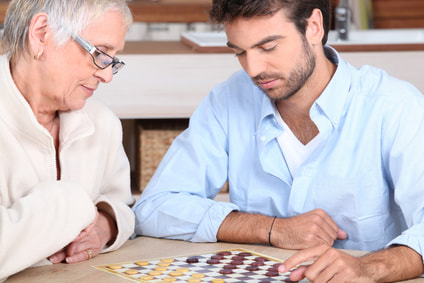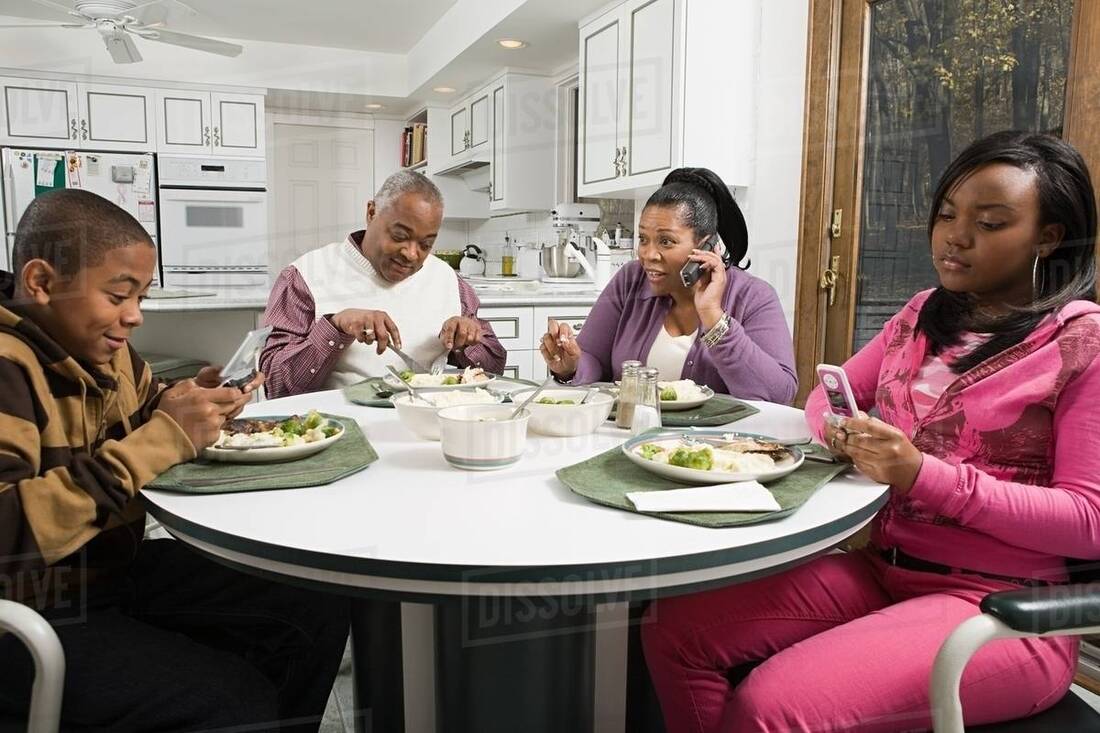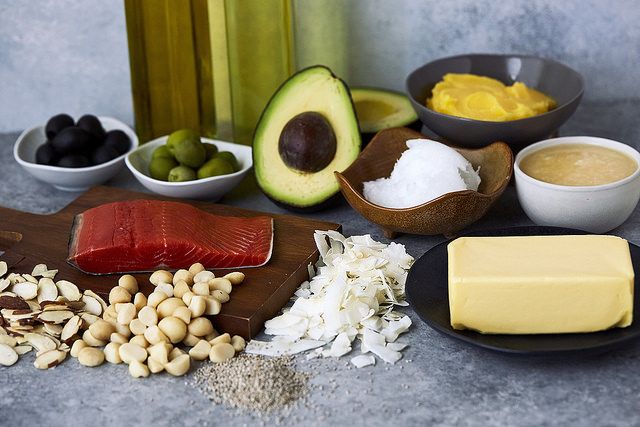 Climbing A Flight Helps You Fight Against Weight Gain Climbing A Flight Helps You Fight Against Weight Gain Wow! Your smartphone congratulates you, gives a new badge, throws glittery papers over your figurine and motivates you to push further hard to achieve your health goals! Yes, its nothing but the fitness trackers and health apps playing their role in improving your wellness and weight loss. People often play number games with their body and health. Ideal body proportion for women is defined to be 36-24-36 inches, women love their body weight to remain well below the desired weight and people aim at completing 10,000 steps a day. Though the number 10,000 seems wholesome, complete and believable how good is it when it comes to achievability, practicality and efficiency? The number was not something that’s been established by the World Health Organization (WHO) or the American Heart Association (AHA) but was the brainchild of a successful Japanese marketing campaign in the mid-1960s. This campaign did not have any scientific explanation behind its promotion but simply wanted to promote their pedometer named ‘manpo-kei’ which literally translates to 10,000-step meter. Surprisingly, WHO, AHA and other reputed health organizations started following the 10,000 steps plan but there have been doubts and questions lingering on their efficiency and correctness. Walking: The Most Underrated Exercise Form Walking still exists as the best physical activity that can be performed by anyone residing in any corner of the world. Still, its effectiveness and usefulness in our health remains underrated and underrecognized. Even for someone who has remained sedentary all his/her life its easy to start walking as this is an activity that we are used to performing while doing our day-to-day chores. An activity that can be performed anytime of the day, walking helps in reducing the risk of cardiovascular disease by 31% and cuts down the risk of death by 32%. But all these benefits only when the duration and intensity are on par with the recommended levels which is not 10000 steps day but doing moderate-intensity exercise for 30 minutes at least five times a week or doing high-intensity exercises for at least 20 minutes thrice a week. Just as how curious we are, a group of curious researchers investigated the how many steps were needed to gain health benefits. They recruited almost 17,000 women aged between 62 and 101 years who were provided with a fitness tracker measuring their step count, speed and distance covered during all times of the day except while sleeping or performing water-based exercises such as swimming. The women were asked for their diet, lifestyle and medical history for the 4-year follow-up period. During this period almost 500 women died and results showed that women who took more than 4,400 steps daily were at a 41% lower risk of death and the risk further declined until about 7,500 steps after which the effect of the step’s effect wore off. A surprise element here in this study is that it did not consider the pace of the activity but only the duration which contradicts previous study results that show that walking pace is indeed linked to longevity. While the results might be applicable on men of the same age, we cannot predict about individuals of other age groups. Still, most people who don’t lead a sedentary life walk at least 4,000-5,000 steps a day and its still good. There are many studies comparing the health effects of people who walked 5000 steps a day to those of people who walked 10000 steps a day by measuring calories burned, BP and glucose levels. Indeed 10000 steps is going to give us better results and we don’t know for sure until we compare it with other numbers such as 7000 steps or 11000 steps. But if you compare the recommended daily activity levels that amounts to 30 minutes of activity five days a week the total number of steps taken each day comes close to 7500 and maybe that’s the number all of us must aim for! This is far better than the recommended 10000 steps a day as we have no clue about the intensity with which these steps must be walked which does play a crucial role in deciding upon the overall health of an individual. It is suggested that we walk a minimum of 100 steps per minute (https://www.theguardian.com/lifeandstyle/2018/sep/03/watch-your-step-why-the-10000-daily-goal-is-built-on-bad-science) if we want to reap any benefits from our exercise routine and this is not a big deal considering the fact that it’s the kind of pace someone follows when he/she heartfully hopes to stay healthy and lead an active lifestyle. Keep it Simple Mathematical formulas scare the hell out of some individuals and numbers confuse many. Likewise, the number 10000 seems unattainable and grueling for some individuals. But keep in mind that we do have evidences pointing to the fact that every single step you take brings you closer to good health. Even 2 minutes of exercising adds value to your overall health and studies do show this with evidence. Nutritionists, dietitians and health experts suggest various ways to stay health and this includes taking the stairs whenever possible, parking the car further away from the parking lot or walking while talking over the phone-all these might be trivial ways to stay active but they do add to your good health when practiced over a long period of time. So, while you do have to set definite targets and aim for different ways to achieve these targets don’t let go of simple and doable activities to keep you going. Involve in gardening, take a bus to office, walk for a kilometer before taking a bus from your second-nearest bus stop or do some stretches during your coffee and lunch breaks. Maybe you can even squeeze in a 10-minute walk after your lunch to clear your mind off the sleep and also get some exercise in between. Fitness trackers could have brainwashed you with their 10,000-steps-a-day target but I hope that we can at least walk close to 7500 steps that fulfills our 150 min/week of physical activity requirements. References You Might Not Need the 10,000 Steps a Day Your Fitness Tracker is Telling you to Take: https://time.com/5597557/do-you-need-10000-steps-a-day/ 10,000 Step a Day? Maybe you Don’t Need Them All: https://www.aarp.org/health/healthy-living/info-2019/7500-steps-daily-is-enough.html?intcmp=HEA-HL-FEED Walking: Your Steps to Health: https://www.health.harvard.edu/staying-healthy/walking-your-steps-to-health 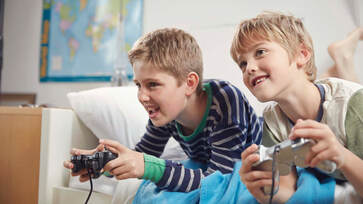 Overstepped Excitement has a Debilitating Effect on Health Overstepped Excitement has a Debilitating Effect on Health Is gaming a passion for you? Well, its time to buckle up and stay cautious as a new research shows that intense gaming can land you with arrhythmia. We still live in an era where gifting children with PlayStation and smartphones are happening at full swing as a reward/recognition for their academic performance or simply as a gesture of encouragement too. Ironically, parents who must be the No.1 individuals to motivate kids to go out and play curb the very same by spoiling them with such gifts. Later on, they are the same ones who also blame the society rather than correcting their own lifestyle for all the spikes in obesity and overweight rates in their children. Worse, during weekends we take them to fun zones and play areas that contain exclusive video games that become an addiction to adults too in course of time. Super Mario and Pac Man are irreplaceable but now the gaming industry is even more inclined to develop more violent, thrilling and sadistic games that ruin the innocent minds of kids, adolescents and adults as well. Mortal combat, Game of Thrones and few others are the favorite of most of us but there are few other video games that guarantee heart-stopping action in the literal sense too! Does the idea of suffering from heart-related problems due to playing video games bother you? It should and it would. Though the idea sounds absolutely crazy and impractical there seem to be cases of young kids hit by irregularities in heartbeat popping up everywhere around the world that it does make each of us think twice before picking up on a game CD on our visit to the shop next time! A letter published in the reputed ‘New England Journal of Medicine’ brought into limelight the pathetic situation of three boys aged between 10 and 15 years who lost consciousness while being engrossed in playing a war video game. Its generally observed that kids who play such games are greatly excited, their heart rates are up and adrenaline levels increase tremendously in the body. If a child suffers from any underlying heart problem this can cause the heartbeat to become irregular (beating too quickly or slowly) resulting in a condition known as arrhythmia. The condition is called as tachycardia when the heart beats faster than normal and according to experts, each of these kids suffered from ventricular tachycardia as they had extremely severe heart abnormalities due to the structure/function of the heart muscle. Such abnormalities can cause a blackout in the concerned person when he/she is at the pinnacle of the game. Its just like situations where some people fall down during an intense sports match or even in the middle of an interview. They cannot be blamed and it is the action of their abnormality in heart structure which is further triggered by extreme stress/exertion increasing the risk of sudden cardiac death. Such blackouts in the middle of a video game are serious indications which require timely intervention. It’s not exaggeration when people normally comment that a person suffered from a heart attack on hearing the demise of a beloved one or was so frightened that it led to sudden death of the individual. Exertion is a very bad phenomenon that can change a person’s life in and out. In the case of the three boys who collapsed playing video games the first boy (10 years old) suffered from a genetic disorder that interrupted the electrical conduction in his heart, the second boy (11 years old) had a massive heart palpitation and the third boy (15 years old) had undergone surgery for a heart defect that was diagnosed when he was an infant. Fainting is sometimes seen in kids, especially when they stand under the hot sunshine during assembly, play out regardless of the heat or skip their meals. But any fainting that occurs due to excitement or stress is not normal and is a sign of danger. It needs to be immediately addressed as they mostly point towards some underlying heart condition. Every infant is like clay ready to be molded into any form wished by his/her parents but as the baby grows, he/she starts accepting or rejecting things based on discretion. I am not trying to say that the baby’s character, attributes and personality are the sole discretion of parents but I mean it when I say that parents have a greater responsibility in nurturing their children into better citizens. Today’s world is complicated and today’s kids are like little adults making choices and deciding things right from their younger years. Even a 5-year-old child clearly knowns his/her ‘wants’ in life, is ready to plan the weekend and chooses between dresses while getting ready for an outing. Their thinking capability is beyond par and most of the times they out win parents when it comes to decision-making skills. But a child is a child and every child’s first role model is his/her parents around whom the child’s entire life revolves, at least during first few years of life. What parents eat, how they behave, what they talk and how they react are seeded inside the child’s brain and their outcomes are visible as and when situations arise.
Eating habits last a lifetime and are the foundation for a healthier life. Every family has their own style of cooking, preparing dishes and serving them. What type of dishes you prepare and how often you eat out determine your child’s choice of foods too. We cannot expect our child to choose between carrot sticks and boiled broccoli when we want bread rolls and cutlets. I strongly believe that every parent tries to impart healthy eating habits to their children right from infancy when we start giving mashed potatoes or beans. I’ve had a roller-coaster experience with my baby girl who sent out outright rejections to many of the veggies including carrots, beets and beans. But this did not deter me from my path and now she loves a bowl of boiled broccoli, peas and corn any time of day! While food preferences are largely learned dislike is the primary reason why many parents stop offering vegetables, fruits and other healthy foods to their kids. But now, we have a new study that proves that repeatedly offering a variety of vegetables to kids improves their acceptance and intake. The research team involved in the study chose 32 families where their children consumed extremely low amount of produce. All the children were between 4 and 6 years of age and their parents completed an online survey before becoming a part of the study group. The study participants were split into three groups-those receiving a single vegetable, kids receiving multiple vegetables and the third group whose eating habits were not changed in any way. The study team collected information on food intake in different ways- vegetables consumed at home, school or daycare was recorded through food diaries and the research team served two dinner meals at the research facility which included broccoli, cauliflower and green beans. Every parent was provided with vouchers to buy veggies and also were instructed on how to cook them and also the portion sizes that could be offered to their kids. Those parents serving one vegetable introduced broccoli and those serving multiple veggies included broccoli, zucchini and peas. Every child was served a vegetable thrice a week for 5 weeks and those kids who tried a vegetable were given stickers as rewards. One has to note the conscious decision of providing non-food rewards in the absence of which the entire study could become meaningless (food rewards only make children crave more for processed foods). While no group showed any difference in vegetable intake at the start of the study vegetable acceptance increased both for single and multiple vegetable groups during the intervention. A significant difference in intake was noticed in families consuming multiple veggies-from 0.6 to 1.2 servings (the increase in portion size lasted up to three months after study completion) while changes were not noticed for those eating a single vegetable or in those who did not change their eating habits. Most of the parents were grateful as they found serving vegetables to be quite easy thereon from what was considered to be a daunting task earlier. Despite improvements in portion sizes none of the families met the required portion intakes that’s pretty saddening. Nevertheless, this can be a first step towards accommodating increased veggies portions in kid’s meals that could improve their health. For more help regarding planning healthier meals for children please visit www.firsteatright.com. Restaurants serving barbequed food witness a constant flow of customers for their grilled specialties especially the meats that are marinated with specialty herbs, sauces and salt to get the special taste and texture. But we do have complaints that well-done and charred meat increases the risk of cancer especially, pancreatic, colorectal and prostate cancers.
But not everyone’s grilled meat tastes so yummy and mouth-watering. If you love to make the perfect grilled meat, the first to ensure is that the meat is red and not grey in color before it hits the grill. Myoglobin is the heme iron containing protein that gives meat its color. Just like how the hemoglobin stores oxygen in blood cells myoglobin stores oxygen in muscle cells. The red color of the meat depends on the myoglobin content present in it. Charcoal grilling is preferred over gas grilling for maximized flavor of the meat as charcoal and smoke from wood chips create flavorful aromas. The aroma is further heightened when the juice from the meat drips onto the charcoal. Your mouth waters at the sight of the meat and you are ready to indulge in the hotdogs and well-done burgers for a tasty treat. But you do think twice before hogging the food as it evokes fear of cancer. This is really annoying and heart-breaking-you have a yummy meal still you don’t eat it happily fearing health hazards. How true is this claim and if so, why aren’t we cutting down on such meat production and consumption too? Toxic Chemical Box The grilling box creates toxins at high temperature called heterocyclic amines (HCAs) or heterocyclic aromatic amines (HAAs) that are a class of chemicals formed mostly in cooked red meat and sometimes in fish and poultry. We are excited over the superb flavor created when juice from the meat drips on the charcoal but it also causes creation of a class of chemicals called polycyclic aromatic hydrocarbons (PAHs) that once again are linked to cancer (https://time.com/5613194/grilled-meat-cancer-risk/). HAAs and PAHs are metabolized by enzymes and some of the byproducts can cause damage to the DNA that exists as the root cause for cancer formation. Sometimes, it’s more than the open flame that causes health effects. Even the International Agency for the Research of Cancer brands these processed meats as carcinogenic and consuming 50 grams of processed meat can increase the risk of colorectal cancer by 18%. While all this is true, there is also another side to the story. The amount of HAA in the meat purely depends on certain factors such as cooking time, duration, method of cooking and type of meat. Those that have the highest concentration of HAA include well-done cooked meats and charred meats. But not all those who eat such meats become victims to cancer and sometimes it does depend on the genetic makeup of the individual to determine how they respond to chemicals and risk the development of cancer. But the question also arises whether its only charred or well-done meat that invokes cancer risk. Eating salami, bacon and hot dogs is pronouncedly seen in those who eat grilled or charred meat and the rise in cancer risk might be even due to the consumption of processed meats such as bacon and salami. We have quite contradictory results from studies too as some support this theory while others deny it. We do have few other studies showing that consumption of fried and grilled meats does increase the risk of diabetes and dementia. This also paves way for understanding the connection between diabetes and dementia-presence of diabetes doubles the risk of dementia. Eating healthy food, exercising regularly and refraining from smoking reduce the risk of dementia. Hence, it comes as no surprise when chemicals in cooked foods such as burgers and chicken are linked to dementia. A Drill on the Best Way to Grill Marinating helps in preventing toxins from entering your meat thereby suppressing the carcinogenic effect on the meat for reasons still unknown. What you use for marinating also determines how much effect it has on cancer risk. For instance, a herb marinade reduces the risk by 72% while a Caribbean marinade drops the risk by 88%. In another study researchers tested the effect of rosemary on ground beef patties. The extract was applied to both sides of the meat and results showed that higher the concentration of the extract, greater was the reduction in heterocyclic amines (as much as 90% reduction rates). Also, while meat tastes great when grilled you can always try grilling fruits and vegetables too such as zucchini, strawberries, guavas, watermelons and pineapples but before doing it remember to clean the grill. Otherwise the leftover carcinogenic agents might cling onto the new foods that are grilled. References The Claim: Rosemary Helps Reduce Toxins in Grilled Meat: https://www.nytimes.com/2010/06/01/health/01real.html Fried & Grilled Meat might Raise the Risk of Dementia: https://www.theguardian.com/science/2014/feb/25/fried-grilled-meat-risk-diabetes-dementia-glycotoxins  Inky Pinky Ponky, Pasta Varieties are Tricky Inky Pinky Ponky, Pasta Varieties are Tricky Sunday evenings are never complete without the white/red pasta sauce dribbling from the corner of my child’s mouth. Available in different shapes and colors- spiral, cylindrical, tri-colored, cashew-shaped, bow-shaped or thread-like -pasta has etched its name forever in our hearts. I strike deals with my little munchkin mostly gambling on this wonder food which is when I started to explore the effects of eating pasta! Pasta is one of the most-popular foods consumed by mankind today, but facts have it that its popularity declined somewhere in 2017 due to serious health and nutrition concerns raised over its consumption. Cut the Calories Not the Carbs Fats were our enemies a long time back and now we have added carbs too to this list. Every individual on a weight loss diet includes carbs in his/her ‘to avoid’ list. Pasta is a dish that primarily contains carbs and so, are we going to knock off pasta too from our menu? Normally we accept/deny foods based on their ingredients and methods of preparation. History says that pasta was typically made using unleavened dough of durum wheat flour mixed with water/eggs, shaped into different forms and finally boiled/baked. Its even common to use rice flour instead of wheat for a unique taste and texture. Traditionally enriched pasta uses only certain parts of the wheat kernel which leaves it without the nutrients and the manufacturer finally adds nutrients such as iron and B vitamins to enhance nutritive values of the dish. The craze for whole grains has left manufacturers with no option but to make whole-wheat/whole grain pasta fortified with omega-3 fatty acids and other fibers as well. Some of these provide us with up to 25% of daily fiber requirements in one portion. When such healthier varieties are available it’s surprising to realize that demands declined in 2017 and makes us more curious to know the reason behind it. What delights us is the cream, cheese, toppings and sauces that go with the pasta varieties. Any pasta seems incomplete without its trademark red/white sauce, seasonings and vegetables. Pasta can be the trademark of nutritious meals when prepared with the right proportion of all ingredients and eaten with portion control. Limit your intake to 1-1.5 cups of pasta and try to include as many veggies as possible in your order. If you are preparing it at home, you are the master of your pasta! Use little oil, include plenty of seasonal veggies and its recommended to prepare the sauces too at home to make your pasta as nutritious as possible. All of this not before choosing your pasta variety. Always go for whole wheat pasta as this contains twice the fiber in comparison to the white pasta. Eating white pasta too is not a sin and its ok to use refined flour once a while as the white flour-based pasta too is enriched with nutrients such as iron and folic acid. Pasta is an excellent source of complex carbohydrates that releases energy slowly unlike sugars that go dashing with their energy release. It has lower glycemic index (GI) which helps against sudden shoot up of blood sugar levels. By pairing your pasta with nutrient-rich foods such as colorful veggies and beans, heart-healthy oils, protein-rich cheese and lean meats and antioxidant-rich tomato sauce you are notching nutritional intake up and adding not simply calories but health too to your meals. Studies Too Support Consumption of Pasta for Health Low GI foods are good for weight loss and to keep heart disease and type 2 diabetes under control. A study shows that people on a low-GI diet lost weight when they included pasta in their meals. Even the American Diabetes Association brands starchy food such as pasta as a part of a nutrient-rich diet for people with diabetes. There are people who avoid eating pasta as they are onto a low-gluten diet but science shows that there is no advantage in eating a gluten-free diet unless you are allergic to gluten. Studies actually show that eating gluten-free pasta is expensive and less nutritious as they are low in fiber and protein but high in sugar and fat. Mediterranean diet is said to have an excellent impact on health and pasta is one of the recommended foods that are present in this type of diet. They are the prime focus of this diet as they are tasty, cheap to prepare and include many of the recommended ingredients in its preparation. If you are interested to know more about the Mediterranean diet please visit the website www.firsteatright.com. After reading through all this if you are still confused whether pasta is a healthy meal option the answer is a ‘yes’ but only when you consume correct portions of the dish, prepare it in the nutritional way (with decreased cheese and cream) and enjoy it with some fruits and vegetables as sides.  Practice Relaxation Techniques to Overcome Anxiety Practice Relaxation Techniques to Overcome Anxiety Anxiety is a common trait in humans and it is a trait that makes us all more humane. Panicking when a loved one is late from office or getting worried about financial crunches during recession is common in each of our lives, at least in the lives of those who are responsible! But when anxiety becomes an everyday habit, we have got something to worry about really! Life is a bundle of surprises and expecting the unexpected is all its about. We must be ready to face whatever might come regardless of the results equipping ourselves with the courage, ability and determination for overcoming them. All of us sail through life indeed but how we handle the problems and issues determine how well we have lived our life. Some are calm even at the face of storm while some others break down at the slightest problem. Some are coolheaded while others are anxious. Your approach has a strong hold on your overall wellness. Its good to be cool, relaxed and confident about how you handle things as relaxing is good for your body and mind. There are yoga classes, group meditations and mind-body calming approaches happening all around us and these services are increasing in popularity owing to increasing stress levels. Despite availability of external help there are a group of people who don’t wish to switch off their mind from the anxious to the relaxed mode any time during the day or night. According to a new research, individuals who are sensitive to shifts in negative emotion (moving from a relaxed state to one of fear) are likelier to feel anxious even during relaxation training. The research included 92 students of whom 32 of them suffered from generalized anxiety disorder (GAD), 34 had major depressive disorder and 30 had neither of it. All the participants were made to perform a set of relaxation exercises before being asked to watch videos that could trigger fear or sadness. Post-session they were asked a list of questions to analyze their level of sensitivity based on their emotional cues. For example, some participants might find help from the relaxation session in dealing with the negative emotions triggered from the videos and some others might be uncomfortable from the emotions experienced after viewing the videos. Once again the participants were taken through a relaxation session before being asked to fill a second questionnaire. The questions in the survey were designed with the intention of estimating the participant’s anxiety levels during the relaxation session. Researchers found that people with GAD were likelier to be sensitive to sharp spikes in emotions (at one time they would feel relaxed but all of a sudden, they would reach peak stress levels). Such sensitivity was usually linked to feeling anxious in the middle of a session designed to make a person feel relaxed. The study clearly shows that some people experience relaxation-induced anxiety, a phenomenon that happens when people become more anxious while undergoing relaxation training. GAD is common in those people whose brain areas involving emotion and behavior are overactive, brain chemicals involved in mood fluctuations are imbalanced, have a stressful/traumatic history, suffer from chronic diseases or have inherited the gene from parents. These people need support and encouragement to look beyond anxiety in life and face troubles with a spirited mind and an air of confidence. According to researchers some people stay anxious to avoid startling fluctuations in anxiety levels but in reality, it is actually healthier for the person to experience such changes. These people are those that primarily require relaxation more than others. These techniques are designed to help people feel relaxed and not the other way around. Mindfulness training can also help people live in the present and be peaceful. So, people who feel that worrying about things prevents the worse from happening should stop acting that way. Read more about mindfulness by visiting the website www.firsteatright.com. Making yourself anxious to avoid disappointments fearing the worse doesn’t help but only makes one feel more miserable. Practically, most of our fears don’t become a reality but the thought that worrying has prevented it from happening encourages people to continue feeling anxious and this is not going to help in life.  Colorful & Attractive but its not Funny When you Look at the Ingredients Quoted Colorful & Attractive but its not Funny When you Look at the Ingredients Quoted It’s probably cereal for daily breakfast, a grilled sandwich for lunch and roti/sabji or simply salads for dinner. Since the early colonial era, much emphasis was not placed on breakfast and lunch while dinner was the main meal during which all individuals gathered together and sat down as a family. But again, it was nothing gala and pompous and discussions revolved about eating mostly. While the farmers and low-wage laborers ate an early dinner the rich intended to have it pretty late. But with the Industrial Revolution happening, people’s meal timings changed and individuals started to eagerly look forward to the one meal of the day in which all of them could sit down, enjoy and eat together as a family and it was none other than dinner. All these brought about changes to the food system and people started associating certain foods with certain meals. Early farmers worked hard in the field and had an extremely energy-rich meal but this had not changed and individuals during the Industrial Revolution too were eating the same meal as the farmer but their lives were pretty sedentary and meal timings were also late. People started suffering health problems including indigestion and this was when health advocates started looking out for healthier options that included vegetables and whole wheat-based foods. This paved way for the birth of breakfast cereal. Seeing the Reality in Cereal It was just like any other normal day in 1863 but James Caleb Jackson, a doctor, decided to put an end to the sicknesses caused due to improper food consumption and came up with the idea of cold cereal as an aid against infection. Sadly, his experimentation was not a success but this laid the foundation for John Harvey Kellogg who started making his version of granula from wheat flour, oatmeal and cornmeal. Granula indeed was the first manufactured breakfast cereal by Dr. Jackson that was not edible unless it was soaked overnight in milk. Competition leads to enmity and ‘granula’ became ‘granola’ in the hands of Kellogg. There has been no looking back since then for Harvey Kellogg and his like-minded brother William Kellogg who together have garnered a vast empire of a number of cereals and monetary power. In a time when bacon and sausages ruled the tables of American families for breakfast the invention of granola was a blessing in disguise for the public. Cereal might be branded as one of the earliest introduced processed foods which has undergone mammoth transformation in the last century. The British and Irish people are the maximum consumers of this prized meal followed by Americans. Breakfast indeed is the most important meal of the day and it is only right that we don’t compromise on nutrients. Our lives have become too robotic and mankind doesn’t have the time to think on trivial things such as breakfast. All that we do is to take a bowl of cereal and pour a glass of hot/cold milk over it to grab a bite. It’s our work that decides our meal and not the other way around. Some don’t even have the time to eat a bowl of cereal that has ended up taking almost every color of the rainbow! What started as a breakfast has now become a snack as people munch upon muesli and granola during evening hours! This might even become a marketing strategy as more than 30% Americans consume cereals for snacks and the British people welcome cereal consumption anytime with open hands. What started as a mixture of oatmeal, cornmeal and flour has ended up being one of the most sugar-rich and calorie-rich foods on our dining tables! Cereals are now healthy only if we choose the right ones to eat and in that case the breakfast cereal can add as much protein as your favored eggs, fiber as your oatmeal and calcium as a cup of yogurt. There are even those cereals marketed nowadays that brim of high sugar content but lack most of the protein and fiber content. We have even reached a state where people have started considering cereals as desserts in disguise. Blinded by Ingredient Listings Most of the cereals marketed today has some form of sugar mentioned as the second or third ingredient in the ingredient list. Even if there is whole grain the excess sugar can neutralize all the goodness of the cereal. Another horrible ingredient is sodium which has crawled into all our favorite processed foods making our waistlines bigger and our nutritional gains smaller. This makes porridge the best cereal for breakfast when there is no added salt or sugar to ruin its health! Muesli without added salt and sugar that contains different grains, fruits and nuts contributing to natural sweetness is also a recommended choice to start your day on a healthy note. Bran flakes are high in fiber and can be a good choice but taste-wise its not a great recommendation indeed! Cornflakes is the most famous of all but does not come at the top of the list as its low in fiber and cannot be a good wholegrain recommendation. The worst choices include muesli with added sugars, sugar-coated cornflakes, granola with dried fruits, nuts and seeds, and granola with chocolate (https://www.bhf.org.uk/informationsupport/heart-matters-magazine/nutrition/breakfast-cereals-ranked-best-to-worst) that ruin all the goodness of whole grains and breakfast with excess sugar and calories. Children too are attracted to these breakfast cereals as they come in all kinds of shapes and colors. But these are extremely unhealthy as they are processed, laden with sugar and missing any nutritive value. While whole grain might be an attraction as an ingredient it is overpowered by the presence of sugar, sodium, additives and other agents that push the cereal’s nutritive value down in the dumps. It is possible to buy cereal that is genuinely healthy but we would rather avoid it as those are the ones that are unprocessed, without much taste and boring as well. There are more than 340 breakfast cereals available in US alone and the varieties differ country-wise. A research on 60 different breakfast cereals targeted for kids showed that more than 2/3rd of them offered empty calories just like sugar. It depends on us to gain knowledge about the different breakfast cereals ruling the market and pick the right one that suits our needs finally. Mind you, breakfast is not just a bowl of some yellow-colored corn kernels and a glass of milk. There is more to it! Enjoy your cereal and start the day on a healthy note to take you through the problems and hurdles that are yet to come your way. References Drop that Spoon! The Truth About Breakfast Cereals: https://www.theguardian.com/business/2010/nov/23/food-book-extract-felicity-lawrence The First Breakfast Cereal Granula has to be Soaked Before Being Eaten: https://www.smithsonianmag.com/smart-news/first-breakfast-cereal-granula-had-be-soaked-being-eaten-180962340/ Is Cereal healthy? https://edition.cnn.com/2017/01/05/health/is-cereal-healthy-drayer/index.html  Fidgeting is an Art that Makes Few People Stand Apart Fidgeting is an Art that Makes Few People Stand Apart Advertisements and marketing hold critical roles in helping weight loss programs achieve great success and greater income. Popular among these are ads for weight management/loss that promise individuals 100% success without the restriction of a diet or strenuous exercise. Such ads might light upon rays of hope in some people but many are now aware that its far off from the actual truth. What if I am also going to promise you that you can burn calories without doing any exercise? All the more, what if I comment that even right now reading this article you are burning calories continuously? Don’t Train but Entertain Weight loss is the difference between calories consumed and calories burned, the latter being greater than the former. Obesity/overweight has become a global problem that’s reaping greater side effects due to negligence of individuals in controlling this epidemic. People have become lazier than before with the onset of scientific advancements and gadget power. They try using a shortcut for everything right from cooking to travelling. Cuisines, food availability and sources have expanded but ways to curb weight gain, limit food intake or increase activity have disappointed us. We take an oath to lose weight on Jan 1st of every year and the motive ends there. Gyms reap from thousands of subscriptions at the start of every year, fitness arenas witness booming business every month when someone or the other goes for a membership and even personal coaches are hired by few to help them achieve weight loss. But exercising isn’t everything. There are many more ways beyond sweating it out at the gym or doing Zumba that can facilitate calorie burning. Standing or Sitting, you are Emitting Calories Forget the dumbbells or the elliptical at the gym and first understand that breathing, seeing and even to keep our heart beating is an activity that requires a certain amount of energy to perform it. This energy is provided by the basal metabolic rate (BMR) which holds responsibility for almost 75% of the calories burned every day. Even a couch potato burns off a few calories by sitting on it and staring at the television while the sleeping beauty easily burns around 45-55 calories/hour while sleeping (Don’t fail to remember that these are only supportive ways and the main solution does remain as physical activity at any given point). At the class or during a meeting it seems very disturbing for the people around when someone mindlessly keeps tapping their leg, swirling their pen or meddling with their finger ring-in short fidgeting-but this seems to be a smart way to burn calories without exercising. A study shows that such acts of fidgeting helps to burn up to 350 calories a day. But sadly, these kinds of actions were commonly observed in leaner individuals compared to obese ones. So, what exactly provokes a person to keep fidgeting? We are still stuck there without an answer but one thing is for sure-it’s extremely difficult to inculcate a habit of fidgeting in someone who doesn’t seem to already possess it. But for those who are proficient at it, it seems to help them learn better too! Surprising isn’t it? The BMR differs from person to person but of course one cannot use it as a reason to blame for obesity/overweight issues. Ageing and weight loss usually slow down BMR while putting on muscle mass or falling sick increases BMR. Even thyroid problems and certain other medical conditions can impact a person’s BMR. Maybe that’s why a person who is the process of weight loss feels it harder to lose after shedding off a few kilograms and even ends up regaining lost weight sometimes. For guidance on losing weight, correcting certain illnesses and maintaining lost weight please get in touch with reputed dietitians and nutritionists at www.firsteatright.com. Ideas to Burn Calories without Exercising If exercising doesn’t excite you change your routine to accommodate other kinds of activities to burn calories without working out. For an idea some of them are listed below:
 Stretch, Bend & Move to Think Better Stretch, Bend & Move to Think Better Branding a person to be as fast as a computer is not a common citation and these individuals stand out of the common lot. Very rarely we come across individuals who can remember names of 100 different countries, their capitals and even their location in the map. With the evolving of smartphone technology there are not many of us who even remember phone numbers of our parents! Calculators for mathematical calculations, apps to remind us of our chores and social media to help us wish dear ones on their special days have left us stranded in terms of memory and thinking. Though the human mind is said to be faster than a computer and we have examples of the mathematical wizard Ms. Shakuntala Devi to prove this how many of our kids or younger adults are aspiring for such a stature in life? Misplaced Thinking Caps Forgotten how to think by yourself? Let go of all the available extra forces outside, believe in yourself, sit in solitude and think. You are sure to discover a new you. Exercise has been recommended for a healthy body but isn’t overall wellness the total output of a healthy body and a healthy mind? C’mon, start exercising for turning into a new leaf who is now equipped with the ability to think. While exercise helping in cognitive improvement has been a topic of interest in older adults (to prevent early attack of diseases such as Alzheimer’s) we are not focusing much on its impact on the younger generation. Stave off cognitive decline in old age with many other techniques shared at www.firsteatright.com. Regular aerobic exercises such as walking, cycling or climbing stairs have been proven to improve cognitive skills of not only older people but also in those as young as 20 years or so, according to a latest research. We have a term to collectively call the specific set of thinking skills that improve with exercise and that’s executive function. Executive function helps an individual regulate his/her own behavior, be more attentive and fulfill goals. The research showed that regular exercising not only improved executive functioning but also increased thickness in an area of the outer layer of the brain. The study involved 132 participants aged between 20 and 67 years who did not suffer from dementia, did not smoke but also did not exercise as a result of which they suffered from reduced fitness levels. Each of the participants were put into one of the two groups-aerobic exercises or stretching and toning four times a week. Each of the participants were given a wearable fitness device that monitored their heart rate. Coaches were assigned to monitor weekly progress, the participants’ cognitive and memory skills were evaluated at the start of the study, three months after the study and at the end of six months too. Aerobic exercises included anything between stationary cycling, treadmill walking or exercising on an elliptical machine. Those in the stretching and toning group performed exercises that promoted flexibility and core strength. It was seen that those who performed aerobic exercises improved their scores on executive function tests by 0.50 points whereas those involved in stretching and toning improved only by 0.25 points. Around 40 years, the thinking skills were almost 0.228 standard deviation units higher in those who performed aerobic exercises compared to those who stretched. At the age of 60, it was 0.596 standard deviation units higher. Every 0.5 difference in standard deviation was equivalent to 20 years of age-related difference in performance. Those people who exercises showed as if they were 10 years younger at the age of 40 and 20 years younger at the age of 60. Exercise shows benefits on adults belonging to any age group. Prepare your mind for reminding your body to exercise. Only when there is a coordination between the mind and the body do we get to see the actual action happening. Just like how sugar and salt are commonly found in our kitchen for cooking purpose diabetes and blood pressure are commonly present in many individuals’ body these days. Diabetes is growing into a public health epidemic. Besides the affected individual taking ample care of his/her health needs and leading a disciplined lifestyle by eating a well-balanced diet there are some things that are ought to be followed by health specialists and other people around to make the individual feel secure and at ease.
Exercise is Good but Not at the Cost of Health: Time and again we have heard physicians recommend patients with elevated sugar levels to never miss out on regular physical activities such as walking or yoga as these help in controlling glucose levels. Often we have also heard diabetics comment that they could see a rise in sugar levels even when they miss out on a couple of days of activity. But before doing any of these it is essential that the patient gets a green signal from the doctor to engage in physical activities (especially when it involves more than walking or moderate-intensity activities) as this protects the patient from suffering dire consequences. Resistance training is recommended for many people as it increases muscle’s sensitivity to insulin thereby allowing them to consume more glucose. Besides cardio training resistance training exercises show potential benefits in lowering blood-sugar levels. Reputed diabetes associations and organizations recommend that diabetes patients perform at least two days of resistance training exercises along with other exercises to activate all major muscle groups. Also, instead of working out at a stretch it is much more effective on glucose levels when the individual does short bouts of exercise at regular time intervals. A study even showed that three 10-minute walk sessions lowered blood glucose levels significantly more than one 30-minute exercise session and this effect was seen more during dinner when maximum carbohydrates was consumed and also individuals are mostly sedentary. Keep a Constant Watch on Blood Glucose Levels: Exercise can cause rapid changes in blood glucose levels which brings in the need to monitor blood glucose levels before, during and after exercise to avoid future complications. A fall in sugar level below 100 mg/dL or rise above 300 mg/dL or 250 mg/dL is an immediate indication to stop exercising. Patients must also monitor their blood sugar levels in a few hours following exercising to avoid post-exercise hypoglycemia as the body would be increasingly susceptible to insulin. Exercising is a great way to instill the information in clients that there are other efficient ways to combat diabetes apart from medications. To help them realize exercise’s effectiveness, the patient can maintain a blood sugar log noting down pre- and post-exercise glucose measurements. Exercise also improves the patient’s mood and energy levels which exists as yet another motivating factor to track glucose changes and take up exercising. Don’t call a Diabetic a Diabetic: Though people realize and accept that they have diabetes none like it when someone brands the person or calls him/her a ‘diabetic’. When we brand people in such a way it seems like we are indirectly telling them that they are not capable of change and would remain like that forever. But when we call someone as a person with ‘type 2 diabetes’ it sounds casual something equivalent to calling a person ‘with fever’. These terminologies might sound casual but it does greatly affect the one with the disease motivating or demotivating him/her to take action or manage the disease with lifestyle changes. When we understand the small nuances of tackling diabetes patients we are creating greater opportunities for their speedy recovery and also paving the way for a healthier lifestyle. With such encouragement and positivity there is every chance that these individuals can manage or reverse diabetes. If you suffer or you know someone suffering from diabetes it is better to visit a reputed nutritionist/dietitian at www.firsteatright.com who can help you with a practical, daily diet plan and exercise schedule for treating diabetes.  How Different are We From Each Other? How Different are We From Each Other? The cells, tissues and organs are what make our body but it’s our likes, dislikes, opinion, persona, character and attitude that makes us the human beings we are presently. We all come with a predefined set of characteristics and tastes that we finetune to accommodate other people’s interests and wishes. In this process of finetuning it is very much important that we don’t lose our identity as our tastes are what makes us X, Y or Z rather than belonging to a cluster in general. Such tastes and preferences are what attracts certain people to certain others while choosing friends, business partners and life partners. The food we like, the wine we choose, our political views, the idea of a romantic relationship, our perspective on life and the care and love we show towards other people strongly represent our identity-all these are what makes other people choose us over someone else, believe in us and fight for us through thick and thin of life. Our tastes evolve with us. If you think deeply, there was a time when you were crazy about collecting the prized toy in the Kinder joy chocolate but now you have outgrown it; the burning desire to collect all superman figurines was the top priority in your 10th year; your love for Lays and Kurkure was never-ending; Mommy loved to dress her son as a girl child during his second or third year of life; you could identify every car model in your primary years at school; every kid wanted to become a teacher or a doctor when he/she grows up and so on. Some of them have obviously changed while your love for some others remains unmoved and has only grown more passionate with time! Most important of all, when we realize the magnitude of such changes we await with surprise for the changes that the future holds for us. Life is full of surprises and we wouldn’t want to throw in any more surprises by bringing in drastic changes to our preferences and choices. It is better to realize that though we might stick with our ideas we cannot decide for our preferences for a lifetime as novelty is a concept that’s sure to change our tastes and preferences irrespective of whether or not we like them. Don’t you feel good wearing the latest dress that’s in fashion? We definitely would like to purchase the latest model smartphone, upgrade our phones to the latest app updates and also wish to purchase those things that have the latest technologies and features. At the same time, we are also comfortable with familiarity which in turn becomes a habit. For instance, we choose to sit at the same table when we revisit a restaurant, prefer to take the same route despite other short cuts available and prefer to bring up our children in the same way like our parents nurtured us. Drinking beer or alcohol for the first time can bring in different feelings and questions simultaneously to the mind-Is this crazy stuff is what people are behind after all? Music too has the same effect-listening to a song for the first time might not invoke pleasure to our senses but when we play it repeatedly it might even become our all-time favorite! Unity in Diversity It stands on one side that our tastes differ but how willing are you to accept the fact that someone has exactly the same taste as yours? In reality, while a 100% mirror image is impossible there are multiple chances that you see someone wearing the same dress as yours, having answered a question in a similar manner or loves the same musician, actor or even sportsperson. Doesn’t it again depend on the person who is having these same views as yours? Individuals don’t feel bad to copy or even follow tastes and preferences of those people in the higher status. When those of the upper class do something, it is only right to follow and if these people reject some preference again, its only right to unfollow it. People’s choices also depend on who exactly they are. Some love individuality and keep choosing things that they really love, some are simply followers and love walking in the footsteps of other people-when others around them do it, they follow suit and some are in between-they have their own choices and also like to sometimes pursue those things that other people do. If you wish to be unique there is always the stress of not getting into the group! Are you one of those people who wishes to stand apart from the rest of the crowd? Do you ask for unique styling choices and rare makeovers that others don’t choose? Do you wish to ride a bike over a Scooter despite being a woman? When we dig deeper, we find that most of our actions are governed by hidden biological forces that prove that we have little or no control over our personal tastes. Realizing the Genetic Makeup of Your Body We feel that we decide upon our choices but science feels that our behavior and choices are decided by our genetic makeup, factors in the environment that affect our genes and by genes that reside in our body due to the action of microbes within us (https://www.nationalgeographic.com/science/2019/08/why-we-like-what-we-like-a-scientists-surprising-findings/). While it does sound bizarre thinking that our choice of ice cream flavor or favorite color is already inbuilt in our body there is scientific evidence backing it! People generally don’t like vegetables and hate those such as bitter gourd, broccoli and Brussels sprouts. Researchers have found that almost 25% people hate broccoli not because they choose to hate it but because they are supertasters. Each of us have variations in genes that develop taste bud receptors and one of the genes, TAS2R38, brings bitter chemicals such as thioureas abundantly present in vegetables such as broccoli to the forefront. A supertaster’s taste bud receptor registers broccoli as a bitter vegetable and such a person avoids eating it even during the hardest of circumstances. We find ourselves attracted to people who are strong mature, bold and confident. If you penetrate deep into your thoughts, these are all signs of fitness and health and traits that all of us would love to pass on to our next generation. Scientists in fact say that each of our traits and behaviors have a genetic background. This does not confine us to the whims and fancies of our genes but we can indeed modify our attitude and behavior with constant revisits. Also, the advent of gene editing brings upon us a plethora of possibilities which includes revisiting our genetic instructions too. There are thousands of opinions and traits sketched in our genes but it’s the environment and our experiences that decide which are the traits that see the limelight. Our parents, the environment and our school define our likes, dislikes and traits. Certain personalities are inbuilt within us but some others are nurtured by such factors. It ultimately depends on us to identify worthy traits, nurture them and mold ourselves into good humans who live with a definite set of ideologies, characteristics and choices. References Why You Like What You Like: https://www.smithsonianmag.com/science-nature/why-you-like-what-you-like-73470150/?all The Secret of Taste: https://www.theguardian.com/science/2016/jun/22/secret-of-taste-why-we-like-what-we-like One exercise that has remained unchallenged since the evolution of mankind is none other than walking. Suitable for people across age groups, befitting the needs of individuals suffering from ailments and the safest activity for pregnant women, walking benefits every man and woman living in this Earth. Pregnancy brings about a cascade of changes in a woman’s body impacting her mood, appetite and energy, and walking is the foolproof way to improve circulation, build stamina and help the pregnant woman stay fit as the baby grows bigger and bigger inside.
Break the Shell Been living a sedentary lifestyle or too busy to exercise until now? Throw away your lame excuses and start following a disciplined exercise schedule until you are advised against it. Before starting any program, discuss with your physician and get his/her approval while understanding the maximum duration and intensity of exercise your body can withstand. Any time in your life when you start exercising, start slowly, proceed gradually and change your activity levels depending on your body’s reaction. Walking is the best activity for both mommy and baby. Leg Resistance: Weight gain is inevitable during pregnancy and it might be considered as essential too (until it is a healthy weight gain). As weight gain happens, muscles strengthen automatically to carry the extra weight without the aid of lifting weights. While other parts of the body benefit from natural strengthening, strength of leg muscles depend purely on the amount of physical activity done. Flexibility: None is ignorant of the fact that joints and muscles pain are prominently present among older people as they age. This is due to decreased activity and movement. Our muscles and joints remain flexible only when they are constantly used and subjected to some kind of movement. Walking helps every pregnant woman maintain overall body flexibility and your leg movements help to keep your hips flexible too. Hips play a pivotal role during childbirth and strong hips that are flexible make it easier for the pregnant mom during labor. Permissible Weight Gain: Physicians recommend different weight gain ranges for pregnant women depending on their current body weight. To check your eligible weight gain limits, you have to simply log on to www.firsteatright.com. The different permissible ranges and the type of foods and snacks that help you stay within your desired ranges are also shared. In general, it is normal for a woman to gain anywhere between 8-12 kilograms but there are a few of them whose weight gain surpasses all upper limits. Walking helps to regulate your metabolism and burn calories efficiently. Even if you are not walking briskly, it helps to burn calories, but metabolism regulation is absent. If possible, a pregnant lady can try to walk as briskly as possible, choose a slightly hilly path or do squats (20 times) every 5-10 minutes in between her walking session to unlock complete benefits. Remember to do all these only after permission from your physician and only when you feel comfortable doing them. Hormone secretion: A pregnant woman experiences different emotions simultaneously-she is surrounded by feelings of joy, happiness, excitation, worry and fear throughout her term. Exercise results in endorphin (hormone) secretion which helps to minimize stress and keep the pregnant woman focused with a positive attitude. Walking has been proved to particularly increase endorphin production. The breezy air, the warm sunshine and the surrounding greenery is sure to take off any stress within you and keep you at peace. Habit for a lifetime: Practicing walking as an exercise regularly prior to childbirth makes the woman continue it after childbirth too. Any habit, god or bad, can be extremely difficult to miss upon and the good ones such as exercise help you reap benefits. Stick to your walking routine by adjusting your timings according to your baby’s needs. Exercising regularly helps to get back in shape and stay relaxed after your little one is born despite back-to-back commitments. The world is becoming home to a greater number of elderly people as there are a huge population of older adults thriving in life with advancements in medical care. This also makes space for various health problems to strike these individuals right from age-related issues to physical and mental health problems as well. The first common age-related neurodegenerative disorder is Alzheimer’s disease followed by Parkinson’s disease (PD). PD is characterized by movement dysfunction, imbalance, cognitive and other non-motor impairments affecting almost 3% of the world population above the age of 65 and up to 5% individuals above the age of 85 as well. The disease seems to be unfavorable to both men and women in different ways-while men are almost two times at a higher risk of developing PD the condition progresses very rapidly in females once it affects them causing premature death. Apart from causing different experience in both genders it also seems like biological sex plays a prominent role in PD and understanding these differences could help doctors come up with better treatment strategies and improve patient care.
A complete list of the differences in motor and non-motor symptoms in men and women was published in a review in the Journal of Parkinson’s Disease. According to this review:
 Choose Foods that Boost your Immunity Choose Foods that Boost your Immunity We are well behind Diwali and Christmas is soon approaching but the gloomy skies and irritating flies seem to dampen our moods alongside the chilly wind that keeps us all indoors as much as possible. While most have already started making their plans for the December vacation there aren’t many who bestow the same kind of attention on preparations for the season that is usually filled with cold, cough, flu, respiratory illnesses and more. Sun seems to be taking some time off its regular schedule during the winter months and the long nights without the bright sunshine seems to play havoc on our circadian rhythm disturbing the sleep-wake cycles. But there are also many who welcome the chilly winter with welcoming hands heaving a sigh of relief after facing the wrath of the scorching sun and the incessant rain until then! Whether you like it or not winter is here which brings about a fear in each of us owing to changes in health conditions with rise in pollution and fall in temperatures. We can see huge lines in front of the physician’s clinic with hoards of people sneezing, sick with the flu or down with a bad runny nose. Exercising and activity take a backseat while sleeping, relaxing and munching on bajjis, pakoras and steaming beverages take priority. Many of us are tucked inside the woollen blankets lamenting to get up every single day to work, school or college and it’s the time of the year when even the most active individuals feel somewhat reluctant to walk, jog or exercise in the chillness outside. Winter can affect your whole body including mental health, leave the skin dry, take away the glow from your face and even leave you dehydrated. Boosting your immunity and taking safety measures to safeguard your body from outside attacks is the best way to protect yourself during these months of the year. The tips given below can surely help you sail through winter without the slightest hurdle! Stay Hydrated: Some might be a little sceptical about hydration during winter but there are heavy fluid losses in the form of urine during the winter months. Set a goal and stick by it; try to drink lukewarm or hot water as much as possible and eat hydrating foods such as strawberries and hot homemade soups. Wear appropriate clothes to prevent heavy water loss from perspiration under the bulky jackets and sweatshirts. Increase Vitamin C, Iron & Zinc Intake: If you are really concerned about protecting your skin and immunity vitamin C is the perfect nutrient to hold on to as it is a powerful antioxidant that has the ability to protect the body against multiple health issues. Add a generous serving of guavas, kiwis, lemon, papaya, broccoli, strawberry and orange to your dietary routine. Choose plenty of legumes, seeds, nuts, dairy and whole grains to replenish zinc stores in the body while also focusing on iron stores in the form of quinoa, tofu, shellfish, spinach and pumpkin seeds. Winters usually make us gloomy due to drop in serotonin (hormone responsible for happiness) levels and we usually compensate for this by eating more of carb-rich foods which can cause harm to the body in the form of chronic diseases. Choose a Well-balanced Diet: While eating a balanced meal during any time of the year is recommended it is especially important during cold months for improved immunity against cold and flu. Choose the colourful fruits and vegetables that are available aplenty during winter months , try to consume fermented foods such as yogurt and kombucha, use herbs and spices such as ginger, garlic, black pepper, turmeric, thyme, basil and cinnamon to boost immunity and try to eat homemade preparations as much as possible as these once again are great on the immune system (https://timesofindia.indiatimes.com/life-style/health-fitness/fitness/Build-your-immunity-for-winter/articleshow/55854850.cms). Don’t succumb to comfort eating which could pile upon calories unexpectedly. Instead, make a simple broth or rely on some hot boiled corn for snacks. Make Friendship with the Sun: We don’t live in Antarctica where seeing the sunshine is a blessing. Go for a late-morning walk when the sun is sure to make itself conspicuous or take a short walk break post-lunch as this ensures that you get your share of vitamin D. Also, the bright sun and its warmth can prevent your gloominess and also ensure that you don’t become a victim of SAD (seasonal affective disorder). While drinking a hot cup of tea might be the ideal thing to do during winter it is always recommended that you meet your friends, go out and get some fresh air to lift your spirits. References Five Healthy & Smart Ways to Stay Hydrated in Winter: https://www.forbes.com/sites/nomanazish/2019/01/31/five-simple-and-smart-ways-to-stay-hydrated-in-winter/#64bdacd77c1e Diet Tips to Stay Healthy in Winters: https://timesofindia.indiatimes.com/life-style/food-news/diet-tips-to-stay-healthy-in-winters/articleshow/66983974.cms Winter is Coming: How to Cope with the Dreaded Winter Blues? https://timesofindia.indiatimes.com/life-style/health-fitness/de-stress/winter-is-coming-how-to-cope-with-the-dreaded-winter-blues/articleshow/71923507.cms 5 Top Tips for Healthy Eating this Winter: https://www.bhf.org.uk/informationsupport/heart-matters-magazine/nutrition/healthy-eating-winter-tips Consider this scenario: An overweight person starts working out and correcting his/her diet routines. This person witnesses a significant change in body weight over a couple of weeks which motivates him/her to work out more with exponential energy. Over the course of weight loss though the individual might perform physical activity routines for the stipulated time period with the same zest and keep an eye on diet too weight loss changes don’t happen as expected. There is a downslide in the weight loss levels and this is not reversed until the individual works out more or changes his/her course of workout. Our bodies seem to adjust to repeated physical exertion and energy demands by burning fewer (where our expectations would have been for more) calories through the day despite the same exertion and efforts taken. This brings us to the question whether there is an upper limit for human endurance and energy expenditure. A new study conducted during a 20-week running race across United States focused on an individual’s maximum endurance in different occasion such as running across the country, participating in the Tour de France or when pregnant.
To most of us, more time and efforts we contribute towards exercising and physical activity greater is our calorie expenditure and weight loss. Even a 2012 study on modern hunter-gatherers found that these people burned the same number of calories as those doing desk jobs despite being in motion through the day. That’s because their body has found a way to reduce daily energy expenditure even during movement which also helped them in other ways-for example, when their calorie expenditure decreased their need for more food through hunting also decreased. Another study in 2015 included some of the researchers involved in the 2012 study and these individuals monitored a group of six racers’ metabolism. This research group noted the daily calories burned by this group of athletes who ran six marathons a week for five months as part of an event called Race Across USA, a 3000-mile race from California to Washington D.C. The research team also focused on other activities that proved to be a test for human endurance including 100-mile trail races and pregnancy. What started as a high energy expenditure turned out to flatten and plunge at 2.5 times their basal metabolic rate for the rest of the event. Also, the maximum energy expenditure found among endurance athletes is only slightly higher than metabolic rates sustained by women during pregnancy. The alterations in the athlete’s energy expenditure was revealed-while the runners burned around 6,200 calories of energy a day during the first week of the marathon 20 weeks later, they were losing 600 fewer calories every day despite running at the same pace and for the same duration with little loss in body weight. Also, at the end of the event these athletes expended only 2.5 times their resting metabolic rates daily very much lesser than 3.5 times their resting metabolic rates that happened during the start of the event. When the research group looked into past studies relating to energy expenditure in any event lasting for more than 12 hours it was found that the participant’s energy expenditure increased significantly and in course of time decreased until it reached a deadlock of 2.5 times their everyday resting metabolic rate. Analyzing the cause behind the limit to human endurance researchers found that it got to do something with the digestive process and the body’s ability to process food and absorb nutrients and calories to fuel all of the body’s processes. Also, maybe the same mechanism that reduces energy expenditure over time might also slow metabolic responses over weeks and months when an athlete starts preparing for marathons. This might also be the reason why some people who train for marathons gain weight. If you are into sports and would like expert help in planning your diet routine and daily activity schedule please get in touch with our expert dietitians and nutritionists at www.firsteatright.com. Flip through health magazines, surf the Internet on the best diet plans or text your friend for a healthy diet suggestion and all of them come up with different choices but I am sure that Mediterranean diet is definitely one of the top choices in any of these. This diet plan has occupied a reigning position in the health sector and remains on top of the list for anyone wishing to lose weight and be active. The year 2019 too finds the Mediterranean diet securing the No.1 position among the best diet plans and if you are planning to try it out there are quite a few things that you must know before going for it. This eases your process and makes your goal easier to achieve:
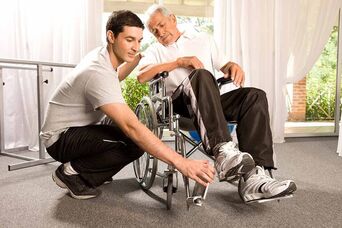 Caregiving Makes you Content At the End of Day Despite the Bumps that Happen in Between Caregiving Makes you Content At the End of Day Despite the Bumps that Happen in Between Life is full of surprises and shocks. There are times when it goes on smoothly and other times during which the most unexpected things happen and our life takes a U turn for the worse. This might be our loved one’s sudden death, an inevitable accident or terminal illness that puts us in a responsible situation whether we like it or not. Not all of us are trained nurses and none of us are prepared to be caregivers-its something that’s forced onto us suddenly without our permission. Such scenarios are common when our loved one meets with an accident and enters coma state, is diagnosed with Alzheimer’s or Parkinson’s or when we give birth to a mentally retarded child. Read more about Alzheimer’s and other types of dementia and how it affects the quality of life of the patient by visiting the website www.firsteatright.com. It might be our very own parents or children that we care for but taking care of someone 24*7 disturbs us emotionally too. On some days we feel complete and fulfilled but there are some other days when we are full of guilt, anger and resentment as it takes aplenty time, physical and emotional energy. There are many times during which we feel overwhelmed with responsibilities involving your home and work besides caretaking obligations, feel love and resentment simultaneously and have your feelings worked up all of which can let you down in no time unless you pay attention to what’s going on around you and to you. Caregiving is not a duty but something of a chore that needs compassion and care. You become a better caregiver by showing love and making your loved one’s day a little better and happier everyday finally being able to ‘make their day’ with a heartwarming smile, baking their favorite muffin or putting on their favorite purple-colored nail paint. Every person takes care in a different way, each have a different relationship with the loved one and emotions come and go at the rarest of the unexpected times for different people. Amongst all the challenges it is your duty to be a better caretaker but it is also crucial that you don’t lose yourself and your identity in this process. Given below are few tips that can help you sail through the process in a better way making it easier for you, on your life and also on the life of your loved one. Never Say ‘No’ to Any Help that Comes your Way: It is during the initial stages of caregiving that many of your family members and friends would love to play a part in your role and quite often you are faced with the question of “Can I be of help in any way?” Though you might be overwhelmed with your new role it is wise to accept any help offered and take some time off to tend to your needs. Delegate Work: It is common to do all the work by yourself but this might tire you in course of time. Hence, find out one or few tasks that consumes most of your time or rips you off the energy and delegate it to some one else. It might be giving a bath, taking the person for some fresh air outdoors or feeding. This way, you are saving money by choosing to delegate only a part of your job to someone rather than shifting the whole responsibility. Discuss rather than Decide Upon Yourself What Your Loved One Wants: It works out better when you sort out wishes and identify your loved one’s goals rather than forcing them with commands. You can make a list of the things he/she likes such as playing a game of cards, drinking tea in the garden or calling over some friends for dinner. Analyze what are the things that makes the person’s life interesting and get down to accomplishing them by yourself or with the help of someone else too. Decide Upon Medical Tests & Procedures: Many elderly people wish to lead a good quality life being happy, staying peaceful and healthy as much as possible rather than eating more medicines, suffering pain and relying on physicians. If there is any medical procedure proposed ask and probe on how this procedure will improve the life of your loved one. If there are minimal chances or no chances please don’t give a green signal for the procedure to be performed on the individual. Don’t Forget yourself in the Process of Caregiving: The role of the caregiver could have been forced upon you and it could even consume most of your time changing your life completely. Don’t forget that you are an individual with opinions and likes of your own in the process of caregiving. Take time off to attend to your needs and get away which is good for you as well as your loved one. It could be a phone call to your friend, some hobby that you enjoy doing or a long walk that helps you ease off stress and clear the mind. Don’t forget to stay active, stay connected and relax yourself. Enjoy the small joys and happiness that happen in this process. After all, you are caring for your mom or dad with whom you have had a great relationship in the past. Though your present relationship could have changed you are still a close-knit family. Talk it Out: There could be some days during which you feel like shouting or just venting your anger. Don’t suppress these feelings but simply talk to someone who cares for you-it might be a friend or a family member. Join support groups that help you talk through your experience and motivate you with tips and tricks. Listen to what your loved one has to say, make eye contact, give them a kiss on their forehead, hug them tightly, give them a surprise once a while (maybe cook your mom’s favorite dish or get your dad’s favorite sport star’s poster) and spend time doing things that both of enjoy together-these are the ones that become precious memories forever in the later run.  Don't Dampen your Child’s Mood by Diverting Attention to your Phone Don't Dampen your Child’s Mood by Diverting Attention to your Phone People who value relationships are a rarity these days. People have changed, priorities have changed and ultimately, their efforts to build relationships and savor them has almost completely disappeared. Each of us are immersed in our virtual world surrounded by Facebook, Instagram and Twitter posts. Maybe you are reading this post while sitting at the table with your loved one over dinner or a name-sake conversation. That’s phubbing! Don’t mind if the word sounds new but its meaning is something that’s been practiced by people these days quite often. Consider these scenarios:
There’s a World Outside Your Gadgets Conversations help people understand each other better, solve problems and miscommunications and bring individuals closer. Work-life balance is difficult to achieve, we reorganize our schedules to have a meal together with our family or take a road trip outside. Aren’t we supposed to give our 100% during such occasions to stay happy, make others happy and cherish the time that we spend together with our spouse, parents, children, friends and others? But bringing in our smartphones in between all this, texting someone trying to connect to the person living on the other side of the world is ridiculous when your connectivity to the person right next to you is zero! It might seem harmless to you but it is extremely annoying to the other person being phubbed as it is just like an indirect insult to him/her. There are chances that the one being phubbed too starts diverting all the attention to social media thereby making the scenario double complicated. Phubbing essentially takes a dig at our self-esteem, sense of belonging or makes us doubt our own meaning for existing in this world (https://time.com/5216853/what-is-phubbing/). Technology has ruined our lives and I would definitely second this. There might be a few advantages which could not be possible without technology but the disadvantages outweigh benefits. Value for humans has decreased tremendously, love and affection are going through hard phases and meaning of very existence has become a question mark. We bury ourselves in the virtual world trying to ignore our shortcomings, escape away from broken relationships or forging our private life to be all glossy and happy. In this process, we lose our very identity and become slaves of technology. This is truer in the case of spouses where studies show that couples who phub each other often experience depression and lower marital satisfaction. Partners who are busy on the phone when the other partner talks to them are clear representations that they are prioritizing other things over you and you start feeling excluded and insecure. Free Yourself & Find Peace Being ignored or less prioritized is bound to happen sometime or the other in each of our lives and phubbing is an experience that most of us have dealt with. Health is both physical and mental health. We may exercise and eat a well-balanced diet thereby protecting our physical health but we do need to pay attention to our emotional needs too. Death or diseases such as cancer and Alzheimer’s are inevitable but we should not push ourselves to the extreme of getting into depression or isolation. Avoiding the physical presence of people around you and enjoying your virtual friends might seem exciting initially as you are not involved in fights, difference of opinions and even not obliged to compromise as you are not bound to sacrifice for the other person in the virtual world. But, in course of time each of us would start yearning for a hug or a word of face to face encouragement. Holding your spouse hand-in-hand seems completely out of the world during certain occasions. So, next time you feel like prioritizing mobiles over relationships remember to hide the gadget away-maybe when you go for a dinner date, meetup friends or have your Sunday tea together. If in case you do have an important call to attend please inform the other person and be responsible enough to only attend the important call. Start valuing relationships, prioritizing the physical presence of people and take time to attend to their needs. I am sure that your life would become brighter surrounded by laughter and happiness, kids would also start treating people with more love spending less time over their gadgets and families would become close-knitted. After all, isn’t it the happiness and fulfillment of our loved ones that we all strive to achieve at the end of day? Having someone to share our joys and sorrows, success and failures and everyday experiences is a blessing. Ask about it to people who don’t have a family or who are left alone to take care of themselves. References Phubbing: What is it & Why is it Bad for our Health: https://www.usatoday.com/story/tech/news/2018/04/24/phubbing-phone-snubbing-mental-health/546124002/ We can swear by the ill effects of overweight/obesity but the results of various studies on the ‘obesity paradox’ takes us by surprise highlighting that such people are blessed to suffer a minimum risk of attack by coronary heart diseases, heart attack or blood pressure. One of the three main macronutrients, fats have been shamed for decades together and isolated as unhealthy foods. Just think for a minute. If fats are highly unlikely to be of use to a man’s health, then why is it deemed to be one of the three major macronutrients?
Unbroken Spell Myths and stories are aplenty and the ones surrounding lowered fat intake is unending. ‘Lowering fat intake adds health’ is only a myth and the underlying principle is that individuals need to consume more of unsaturated (good) fat and less of saturated fat (bad). Forgetting this, we’ve been elaborating on the goodness of ‘healthy’ fat surrounding heart and gluteofemoral fat surrounding organs such as thighs, hips and buttocks that can improve heart health and cardiometabolic health respectively. Reducing intake of saturated fats lowers the risk of heart attack and stroke but that’s not all. This reduction must be replaced by consuming unsaturated fats that are good for the heart (as they slow down the buildup of plaque in arteries. It’s been proved that switching over from a saturated fat diet to an unsaturated fat diet reduces the risk of heart disease, diabetes and blood pressure too. We are talking about fats in terms of nutrition and not flesh surrounding the body and organs. Despite studies supporting the ‘healthy fat’ theory, the latest research published in the Journal of the American Heart Association shows that less the fat in your body greater is the chance of heart health. Losing ‘any’ type of fat is deemed to be healthier and helps in reducing the risk of heart disease. Any Fat Loss is Gain for the Body We don’t determine where the fat we eat goes-either to the wrong places in the body or to the so-called protective regions that are said to hold an advantageous edge. Let’s assume that your body has fat stores in the protective regions and when you make up your mind to lose weight how beneficial is this fat loss to your health? By disrupting the protective covering over your heart, legs and thighs are there any chances of increasing the risk of cardiovascular diseases? To answer this question, researchers analyzed seven different studies on weight loss that was achieved through dieting. 399 participants were analyzed and the researchers compared the risk of heart disease in people who lost fat around their thigh, hip, back and surrounding muscles. Cardiovascular health was measured using blood sugar, insulin, cholesterol, triglyceride and blood pressure levels of participants. Researchers found that loss of leg fat and leg lean tissue was linked to decreased risk of heart disease. Meanwhile, cardiovascular health was not affected due to muscle loss in the gluteofemoral areas. This proves that any fat loss anywhere in the body is good for health. Rather than focusing on where the loss is happening focus on the advantages accompanying the loss. Loss is Good The research shows clearly that fat loss anywhere in the body is good irrespective of the place where you are losing it. Also, physicians must focus on weight loss initially by suggesting the patient to go for a diet plan along with light physical activity. For healthy diet plans, one can get in touch with registered dietitian nutritionists at www.firsteatright.com. Once some of the weight is knocked off the body, they can go about recommending vigorous-activity exercises. Apart from losing abdominal fat (one pays a hefty price for this in terms of heart health) it is also recommended to lose leg fat for lowering cholesterol and protecting the heart. A Test for Boldness Once Again: Childhood Cancer Survivors are at an Increased Risk of Heart Disease11/6/2019
A cure for an illness must not be the cause for some other illness. Some of you might think that this is an unnecessary statement as medical discoveries don’t work that way but you are mistaken sometimes.
Cancer was a deadly disease a couple of decades back as there was no cure and people ultimately died once they were diagnosed with the disease. Though still a terrible disease, recent times have witnessed tremendous improvements in cancer treatment procedures that include chemotherapy and radiation therapy for patients suffering from all types of cancer. Many patients go cancer-free and live for years together while there are many others who acquire other forms of cancer or health problems in a few years’ time after their cure. In the 1980s survival rates for leukemia went past single-digit numbers to 50% and kids were declared to be cancer-free. But few years down the lane the same doctors witnessed that these children who were free of cancer were not healthy either. The chemo and radiation treatment that was used to kill chest tumors led to weakening of the heart sometimes month after cancer treatment or even a decade after. Many of them were struggling to breathe, some faced heart failure or abnormal heart rhythms and others were bestowed with a second cancer due to the treatment effects of the first, trouble learning, infertility, thyroid abnormalities and impaired kidneys and lung functionalities. These were the first set of children who brought into limelight the side effects of the cancer treatment. Radiation & Chemo Increase Risk of Heart Diseases While radiation and chemo help in killing cancer in individuals they can also lead to development of cardiovascular problems in the same individuals- Some cardio problems can occur while the chemo is being given and others occur when the individual has long forgotten about cancer. Radiation therapy has the ability to cause heart failure, heart attack and arrhythmias while chemotherapy can cause damage to the heart and the peripheral blood vessels, cause problems with clotting or blood lipids. A research team studied 7,300 survivors who were diagnosed with cancer at the age of 7. This group was compared with another group of 36,000 individuals who were of the same age group and gender but without any cancer. The research team found that childhood cancer survivors were at a three-time higher risk of having a cardiac event compared to their counterparts without cancer. Almost 3% of cancer survivors faced one or more cardiac events during a decade of follow-up in comparison to only 1% of those without cancer. Those who survived the harms of cancer were at a 10-time higher risk of heart failure (such as coronary artery disease, arrhythmias, valve abnormalities, heart failure and cardiomyopathy) than those without cancer. While cancer treatment cannot stop it is possible to address modifiable risk factors such as high blood pressure and diabetes that can occur as a side effect of the cancer treatment. These modifiable risk factors have the risk of leading to premature ageing of the heart paving way for heart disease to strike earlier. It is indeed frightening to witness such devastating side effects of cancer treatment in kids. Heart muscles start to weaken soon after chemo when using certain chemotherapy agents. Heart attack, arrhythmias, low blood flow to the heart and inflammation of the sac around the heart can also be possible due to other agents. It might prove to be useful to be followed up by a cardiologist especially in those case of patients who are at a high risk of heart disease or already suffer from it. It is indeed necessary to monitor the survivor’s lifestyle practices and eating styles to protect against metabolic disorders and cardiac diseases. Eating healthy, exercising daily and staying active helps in reducing the ill effects of heart disease and other health problems as much as possible. But again, this is besides the effects of chemotherapy and radiation done for killing cancer cells in patients. For pursuing a healthy lifestyle and eating right get in touch with reputed dietitians and nutritionists at www.firsteatright.com. I’ve always felt that musicians are one of the most blessed people as they are in a profession that fetches them ample money, fame and above all, these people follow their heart and have chosen a career which they are passionate about! Even during times of distress and anger when I reach out for music to soothe my heart, I’ve always thought about these lucky people who can sing a song or play an instrument to help themselves dissuade from such negativities on their own! Music has been quoted to be a universal way to pep your mood and spirits. All cultures in this world make some or the other form of music and all of us have it in us to appreciate good music, hum along the tune whether we know to sing or not and shake our hips or make a dance step or two irrespective of the fact that we know to dance or not! We see people whistling to themselves a tune from a popular movie while walking down the road, listening to fast-beat songs while travelling long distances, lose themselves during late night hours in love with old classics that stream in their radio, students hum a tune or two in happiness when their exam results are favorable, we love to sit back and listen to songs after a hard day at office and even doctors have their favorite playlist that’s often played in operation theatres while performing surgeries as it helps them keep their cool and save lives! Its been shown in studies that listening to music before surgeries even improves post-op outcomes! A crying baby is often pacified with musical rendition from his/her mother and also put to sleep by singing lullabies. Though the neurobiology of music exists as a highly specialized field we also have proofs that music helps in improving health too right from tending to our memory and mood to cardiovascular function and physical performance.
Music has the power to improve well-being, stress-related measures and boost mood but it can also leave a person agitated and unsettled (https://time.com/5254381/listening-to-music-health-benefits/). Picking the wrong music can put you in a pretty bad mental state bringing out negative emotions such as anger, depression and sadness. Experts say that the rhythm and the kind of song that we select can reform our heart rates and activities of the brain’s neural networks. Soothing and slow beat songs have a calming effect while fast-beat songs can rev up energy levels leaving you with pumped up spirits. While swimming, reading or even sleeping helps some people with boosting their mind there are some who choose music to calm their troubled minds. Even celebrities pursue an interest in music to get away with their back-to-back schedules and stress. When music has the power to heal all of us why does it have the exact opposite effect on music professionals? Today’s Musicians are More than Singers-Performers as Well! Life exists in a world where multitasking is the key. Yesteryear actors, singers and musicians were those kinds of people who found content in performing their job alone but today, a music director sings as well as acts, a singer tries his/her hands in penning down lyrics and an actor wants to be omnipresent- singing, directing and so on. The advent of reality shows and stage concerts have turned individuals into puppets who sing, act and perform according to the likes of the audience. Even popular singers and musicians have joined this spree where they have started to dance and perform along with singing to capture the likes of their fans and save a spot for themselves in the entertainment industry for a long run. But we keep hearing more and more depressing news that creating music and live shows could lead to drug and alcohol abuse. We have first-hand info from popular singers-Nicki Minaj, a famous rapper today, was once having suicidal thoughts owing to her failure during initial years and even the extremely popular Lady Gaga comments that fame made her feel traumatized sometimes. None can forget the heart-wrecking journey of Avicii who committed suicide after succumbing to alcohol abuse, anxiety and post-surgery pain. While the world knew Avicii nobody really ‘knew’ him well to understand his pain and suffering endured along with the fame and success in life. Music tours around the world has become increasingly seen these days-this is beneficial to the audience but the musician visiting a country or city is pulled down by insomnia, stress and anxiety. These individuals don’t have a long-standing personal relationship owing to their absence from their country for long durations, suffer from isolation (though surrounded by thousands of fans the performer feels lonely within) and many musicians such as DJs perform late during the nights almost up to 3 AM in pubs and hotels before retiring to their room to sleep. Such haphazard working hours and work schedules force them to sleep on the planes or anytime during travel leading to chronic sleep deprivation which remains the cause behind a compromised immune system, increases anxiety and stress levels, causes depression and cognitive impairments. The common man envies the celebrity musician of his/her chance to tour around the world, visit different places, earn millions and above all, be liked and admired by all. Fans have fun during concerts and are surprised when they hear that their favorite musician is into depression or stress. As a fan we might even feel “What’s so depressing while enjoying music and performing something that you are a natural in”. However familiar the musician might be with the songs sung and it might even be his/her 500th performance still he/she has a fight or flight response that’s evidently seen during high-pressure situations such as singing in front of thousands of people or a huge crowd. For some, it leads to a better performance due to the adrenaline rush but for some others it can lead to panic attacks, anxiety or even memory loss. But every musician believes that fame and success come at a personal price paid in the form of health, relationship, addiction, depression and anxiety. However rich and powerful you might be, the basic needs such as sleep, affection and compassion remain the same. More the number of shows greater is his/her risk of stress. The individual is totally isolated from his/her family, spends months away from his/her kids, never sees the light of day on most days, stays away from the comfort of the home and above all, lives a solitary life. It is necessary for them to take breaks in between and attend to their health and wellbeing. Nothing comes before self-care and wellness! Music plays a key role in improving the common man’s mood, health and well-being but it is time that musicians take serious steps to take care of their health and wellness too as they are a prize in our lives, a candle that staves away our darkness and a source of hope in each of our souls. References Music is Good for Our Health, so why are Musicians Suffering So Much? https://www.independent.co.uk/arts-entertainment/music/features/music-mental-health-industry-artists-depression-anxiety-lady-gaga-zayn-demi-lovato-a8732341.html Avicii: Is Mental Health in Music Still at Risk? https://www.bbc.co.uk/bbcthree/article/31a1b2ae-2373-45e0-9520-d651414779ad Drugs, Sleeplessness, Isolation: the Downside of Being a Dance Musician: https://www.theguardian.com/music/2016/jul/26/djs-touring-mental-health-drugs-sleeplessness-isolation Maybe You Hate or Love Certain Foods Just Like your Forefathers-It's in the Gene After All!11/4/2019
“I hate Cabbages, I get it from my Dad”; “I love Spinach just like my Mom”-Such sentences are more than common in our lives. Be it a personality, a physical trait or a food choice immediately we link it with our family roots. Though we might not be so very inclined to do so our grandparents come up with such statements spontaneously that we do follow suit. Genetics is a sea and study on our genes is never-ending. There is something new cropping up every single day in the world of genetic research and the latest in study are the genes that affect food preferences. Results clearly show that each of us are tasting the same food in different ways!
Receptors, a type of nerve found in the body sends signals from the gut to the brain. The receptor in each of our body determines the type of food that we prefer-have a sweet tooth, salty pinch or a spicy hangover. How these receptors work also brings answers to the reasons behind various queries such as why some people find broccoli to be extremely bitter or smell a fragrant odor after eating asparagus. We all hate the bitter gourd for its bitter taste, some don’t prefer to eat cabbages due to its pungent smell and avoid papayas owing to their unpleasant odor. But there are some individuals who can’t stand the sight of cilantro or broccoli. Cilantro: Have you heard someone comparing cilantro to the taste of soap or the smell of bedbug? Genetics plays an integral role in cornering certain people into getting these weird tastes and smells-especially the olfactory genes that plays a main role here. Those who hate cilantro have both a copy of the gene that detects soapy flavor and a variant of the olfactory gene that’s makes the individual extra sensitive to bitter taste thereby making the herb’s bitter taste more pronounced than in the case of other people. Such people can either avoid the herb completely, substitute it with other herbs such as basil or parsley or crush the herb completely to take off the bitter taste as much as possible. Asparagus: Folate is needed for all, especially for pregnant women to help them avoid neural tube defects in the developing offspring. Dietitians and health experts recommend consuming folate-rich vegetables such as leafy greens, beets and asparagus to make DNA, other genetic material and for cell division. Studies show that almost 50-65% individuals smell a distinctive odor in their urine after eating folate-rich foods and asparagus, including green, white and purples, is no exception. Researchers have not yet been able to pinpoint a definite reason but contribute it to be the work of a number of chemicals such as asparagusic acid, methanethiol and dimethyl sulfide. Just like in the case of cilantro, the individuals here are also linked to the genetic component that brings about the smell in urine output. They too possess the olfactory gene that signals the brain about the asparagus fragrance! But if you can’t compromise on the smell you always have other folate-rich foods to substitute for the nutrient needs. Broccoli: if you love cauliflower, purple or green cabbages, broccoli and Brussels sprouts then you are a fan of the crucifers! These nutritious vegetables belong to the cruciferous family that boasts of high folate, vitamin C and K content. They are also good sources of fiber and low in calories making them a good pick for salads and sabzis for those wishing to watch their weight! Despite such benefits many individuals don’t prefer to eat them as they have a bitter taste that lingers in your tongue, even more for people whose bitter taste receptors function extremely strongly. That’s because all of these vegetables contain sulfur-based compounds that bind to bitter taste receptors and send signals to the brain. The brain processes these taste as bitter in all of us but it is our genes that makes us respond to this message of bitterness in different ways-those who love eating them don’t feel the bitterness to be much intense while those whose genes enhance the bitter taste find them really annoying and distasteful. But even such people find it bearable to eat these veggies after cooking them rather than eating them raw as the heat generated kills some of the compounds that produce the bitter taste. Next time if you find Broccoli unwelcoming, try roasting it in the oven or cook it with your pasta for an enriched nutrient experience. It’s common for kids to wrinkle their nose at the sight of Broccoli or radish! But there are many adults too who find such vegetables repulsive! Maybe it’s in their genes affecting their food choices, making them go haywire at the sight of certain foods. It’s better to try and include all foods in your meal to make it well-balanced and healthy but if your genes prevent you from eating some of them please don’t panic. There is a replacement food that’s as good in nutrients as the one you despise. If bitterness is in your gene and you find many foods to be out of your reach it is better to get in touch with reputed dietitian nutritionists at www.firsteatright.com who can help you find the best replacements and plan a daily menu that would fulfill the daily dose of nutrients required. |
AVOID FRAUD. EAT SMART.+91 7846 800 800
AuthorDietitian & Nutritionist Dr. Nafeesa Imteyaz. Archives
July 2024
Categories
All
Dr. Nafeesa's Blog @blogspot |
- Home
- Written Testimonials
- Consult
- Clinics
- Blogs
-
Diet & Nutrition
- Diabetes Reversal
- IVF IUI not needed for PCOS PCOD Infertility
-
Medical Nutrition
>
-
Disease & Conditions
>
- Infertility | PCOS
- Diabetes Mellitus
- Cholesterol
- Hypothyroid
- Kidney Problems
- Hypertension
- Cardiovascular Diseases
- Liver Diseases
- Gastro intestinal disorder
- Cancer
- Metabolic Disorders
- Orthopedic Disorders
- Eating Disorders
- Dietary Recall
- Weight Record Filled By Clients
- Online Payment Transaction Details
- Online Clients Weight Check Form
- Our Program Package Service Charges
- Weight Record 2017 Clients
- Measurements sent by Clients
- Terms & Conditions Of Payment
- Thanks. Your Form is Submitted
- Video Testimonials
- Lifestyle & Wellness
- Lifestyle & Wellness Blog
- Allergy & Intolerance
- Weight Loss / Gain
- Weight Loss / Slimming Blog
-
Disease & Conditions
>
- Life Cycle Nutrition >
- Sports Nutrition >
- Integrity in Nutrition
- Knowledge Centre
© COPYRIGHT 2022. ALL RIGHTS RESERVED. FRST HEALTHCARE PVT LTD.
Dr. Nafeesa Imteyaz of First Eat Right clinic, is the Best Dietitian Nutritionist in Bangalore. Best Dietitian Nutritionist in Pune. Best Dietitian Nutritionist in Hyderabad. Best Dietitian Nutritionist in Chennai. Best Dietitian Nutritionist in Mumbai. Best Dietitian Nutritionist in Delhi. Best Dietitian Nutritionist in Kolkata.




